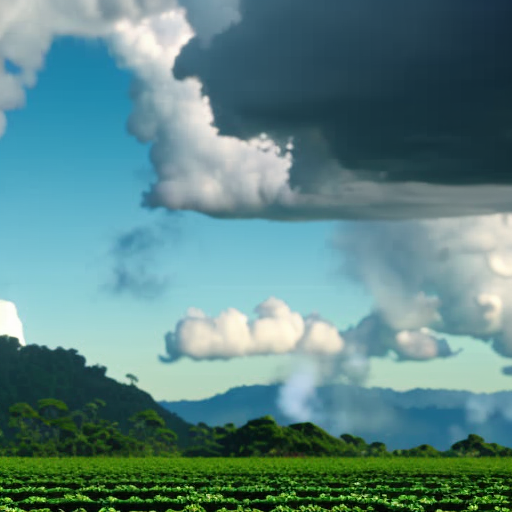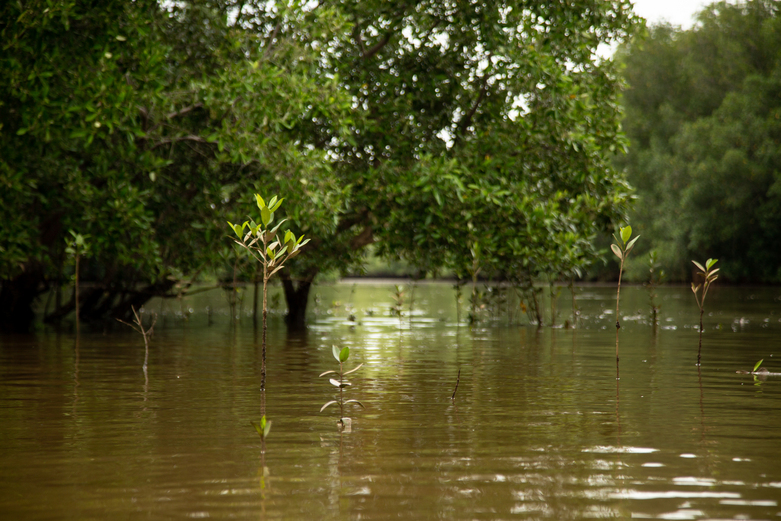
Report on Costa Rica’s Sustainable Development Goals
Context

Costa Rica has ambitious Nationally Determined Contributions (NDC) and Sustainable Development Goals (SDG) to become a resilient and carbon-neutral economy by 2050. However, there is still great potential for further development and to implement effective “green and blue” production standards in relevant sectors.
Political commitment to this agenda is high despite the economic effects of the COVID-19 pandemic. In fact, the Costa Rican government considers decarbonisation and resilience processes to be important to recovery from the pandemic crisis.
Costa Rica’s high climate mitigation and adaptation ambitions make it a key international player, a leader in the Americas and an ally in contributing to the European Union’s climate neutrality ambitions and its new Green Deal. At a time when climate ambitions are being questioned, there is a clear interest on the part of the European Union and Germany in reinforcing alliances on climate change with Costa Rica.
Objective

Actors from relevant sectors in Costa Rica have shifted their agricultural and blue production systems towards more biodiverse, low-carbon and climate-resilient value chains.
Approach
The programme aims to transform Costa Rica’s agricultural sectors by supporting its Nationally Appropriate Mitigation Actions (NAMA) – in the areas of coffee cultivation, livestock, and banana cultivation. It also carries out activities to conserve marine-coastal resources and manage them more effectively.
The goals are to:
- save 40,000 tons of CO2 equivalent,
- effectively conserve and manage 2,000 square kilometers of marine-coastal resources,
- raise additional climate finance of at least 10,000,000 US dollars.
For this, the program works on five components:
- Governance: making policies and governance coherent and efficient to enable low carbon and resilient pathways
- Agriculture: implementing low-carbon, biodiversity-conserving, and resilient agricultural production practices
- Marine and coastal areas: improving the livelihoods of coastal communities, based on the sustainable management and conservation of marine and coastal resources
- Climate finance: making climate finance available for all the relevant stakeholders
- Capacity building: increasing awareness and knowledge about low carbon pathways and resilience within the population.
In addition to the components, the program seeks to support the achievement of the indicators, such as: monitoring and evaluation, access to new markets, and agribusiness.

Last update: August 2023
SDGs, Targets, and Indicators in the Article
| SDGs | Targets | Indicators |
|---|---|---|
| SDG 13: Climate Action | Target 13.2: Integrate climate change measures into national policies, strategies, and planning | Indicator not mentioned in the article |
| SDG 14: Life Below Water | Target 14.2: Sustainably manage and protect marine and coastal ecosystems | Indicator not mentioned in the article |
| SDG 15: Life on Land | Target 15.9: By 2020, integrate ecosystem and biodiversity values into national and local planning, development processes, poverty reduction strategies, and accounts | Indicator not mentioned in the article |
| SDG 17: Partnerships for the Goals | Target 17.16: Enhance the Global Partnership for Sustainable Development | Indicator not mentioned in the article |
1. Which SDGs are addressed or connected to the issues highlighted in the article?
SDG 13: Climate Action
The article highlights Costa Rica’s ambitious climate mitigation and adaptation goals, making it a key international player in addressing climate change. The country’s commitment to decarbonization and resilience processes is seen as important for recovery from the COVID-19 pandemic. This aligns with SDG 13, which aims to take urgent action to combat climate change and its impacts.
SDG 14: Life Below Water
The article mentions the program’s activities to conserve marine-coastal resources and manage them more effectively. This relates to SDG 14, which focuses on the sustainable management and protection of marine and coastal ecosystems.
SDG 15: Life on Land
Although not explicitly mentioned in the article, the program’s objective to shift agricultural and blue production systems towards more biodiverse, low-carbon, and climate-resilient value chains aligns with SDG 15, which aims to protect, restore, and promote sustainable use of terrestrial ecosystems.
SDG 17: Partnerships for the Goals
The article highlights the interest of the European Union and Germany in reinforcing alliances on climate change with Costa Rica. This relates to SDG 17, which emphasizes the importance of global partnerships for sustainable development.
2. What specific targets under those SDGs can be identified based on the article’s content?
Target 13.2: Integrate climate change measures into national policies, strategies, and planning
The article mentions Costa Rica’s commitment to decarbonization and resilience processes as important for recovery from the pandemic crisis. This aligns with the target of integrating climate change measures into national policies, strategies, and planning.
Target 14.2: Sustainably manage and protect marine and coastal ecosystems
The program aims to conserve marine-coastal resources and manage them more effectively. This aligns with the target of sustainably managing and protecting marine and coastal ecosystems.
Target 15.9: By 2020, integrate ecosystem and biodiversity values into national and local planning, development processes, poverty reduction strategies, and accounts
Although not explicitly mentioned in the article, the program’s objective to shift agricultural and blue production systems towards more biodiverse value chains aligns with the target of integrating ecosystem and biodiversity values into planning and development processes.
Target 17.16: Enhance the Global Partnership for Sustainable Development
The article mentions the interest of the European Union and Germany in reinforcing alliances on climate change with Costa Rica. This aligns with the target of enhancing the global partnership for sustainable development.
3. Are there any indicators mentioned or implied in the article that can be used to measure progress towards the identified targets?
No specific indicators are mentioned or implied in the article that can be used to measure progress towards the identified targets. The article provides an overview of the program’s goals and components but does not provide specific indicators for measuring progress.
SDGs, Targets, and Indicators
| SDGs | Targets | Indicators |
|---|---|---|
| SDG 13: Climate Action | Target 13.2: Integrate climate change measures into national policies, strategies, and planning | Indicator not mentioned in the article |
| SDG 14: Life Below Water | Target 14.2: Sustainably manage and protect marine and coastal ecosystems | Indicator not mentioned in the article |
| SDG 15: Life on Land | Target 15.9: By 2020, integrate ecosystem and biodiversity values into national and local planning, development processes, poverty reduction strategies, and accounts | Indicator not mentioned in the article |
| SDG 17: Partnerships for the Goals | Target 17.16: Enhance the Global Partnership for Sustainable Development | Indicator not mentioned in the article |
Behold! This splendid article springs forth from the wellspring of knowledge, shaped by a wondrous proprietary AI technology that delved into a vast ocean of data, illuminating the path towards the Sustainable Development Goals. Remember that all rights are reserved by SDG Investors LLC, empowering us to champion progress together.
Source: giz.de

Join us, as fellow seekers of change, on a transformative journey at https://sdgtalks.ai/welcome, where you can become a member and actively contribute to shaping a brighter future.





